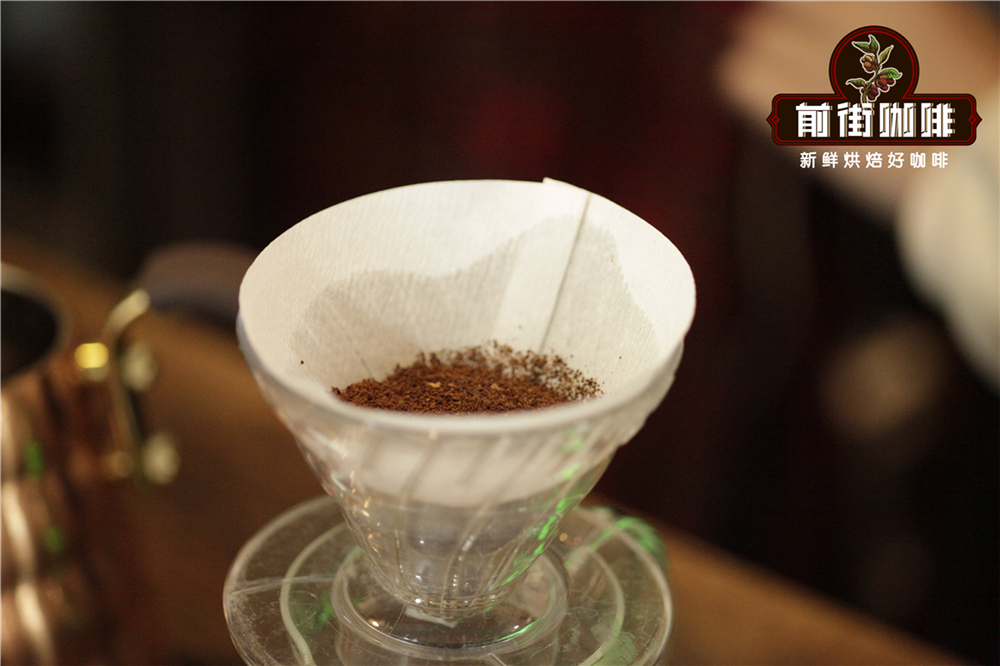How to distinguish coffee aroma and aftertaste? What makes coffee taste?

You asked us, "Why is the aroma and aftertaste of coffee so different?" Even if the same chemicals may be involved? This is what we found:
The aftertaste of coffee refers to the taste and aroma left in the mouth after swallowing. Compared with other drinks, the aroma of coffee spreads for a long time: the aftertaste of espresso can last as long as 15 minutes (RJ Clarke and OG Vitzthum, 2001).
Depending on the coffee, this may not be a good thing. However, no matter how good your coffee is, the rest of the taste is always different from that of brewing (and often less pleasant). Coffee that tastes great when you drink it will leave a lingering smoky or metallic taste in your mouth.
So why only some of these flavors and flavors linger in the mouth? Why does it seem to be the most unpleasant flavor?
Aftertaste or rhyme?
Strictly speaking, taste refers to what we experience on the tongue: sweet, salty, sour, bitter, fresh, and maybe one or two others (e.g. MG Tordoff, 2012, CA Running, 2015). When we talk about the aftertaste of coffee, we are usually actually talking about the combination of taste-taste and aroma. Researchers sometimes switch to "smell" or "smell" to distinguish them from the aftertaste.
In the strictest sense, only considering the basic taste, the aftertaste of coffee is different from that of drinking it. Different compounds have different aftertaste lengths: for example, caffeine has a longer aftertaste (EJ Leach&AC Noble,1986) than quinine. This means that the taste balance in the aftertaste may be different from that of the first taste.
However, the biggest difference in aftertaste is the flavor, not the flavor. This is because certain molecules remain in the mouth for longer than other molecules after swallowing coffee. These molecules enter the nasal cavity through the back of the throat, so we continue to experience their aroma after swallowing most of the coffee. This is called the sense of smell behind the nose. Swallowing actually increases the sense of smell behind the nose, as the movement of the pharynx pushes the aroma into the nasal cavity (Buettner et al., 2001).
Which molecule remains?
The aroma compounds with the longest adhesion time are considered to be the largest and the least water soluble molecules. Larger molecules have the least volatility, which means they are less likely to evaporate. Aroma molecules need to be vaporized to reach the nasal cavity, and the weight of larger molecules means it takes longer for them to escape the liquid and reach the nose. Many of the larger molecules in coffee are produced by dry distillation during roasting and are associated with woody, spicy and rough flavors (TR Lingle, 2011).
Smaller water-soluble molecules also remain in the mouth after swallowing because they are likely to bind to or dissolve in coffee oil. After swallowing, the oil covers the mouth and retains odor molecules, which are released as gases or gradually dissolved in saliva (JF Prinz&R de Wijk, 2004). Compounds soluble in coffee oil have many bitter and roasted flavors in coffee (Jas á nchez L ó pez et al., 2016).
Natural surfactants (such as melanin) found in coffee can make coffee oil cover the mouth more effectively (Navarini et al., 2004). Oil and melanin are particularly concentrated in espresso, which is one of the reasons for the long aftertaste of espresso. Since both macromolecules and less water-soluble molecules are associated with some of the more unpleasant flavors in coffee, it can explain why the aftertaste is usually not as pleasant as the first bite.
Tasting postscript
Although we expect larger, less water-soluble molecules to remain in the mouth, we don't know exactly which molecules cause the aftertaste of coffee. In wine, the aftertaste has been studied in more detail, indicating that it may not be limited to size and solubility.
In wine and coffee, different flavors last for different periods of time, and the most volatile compounds produce fruit or flower aromas that disappear first. However, polyphenols in wine interact with different flavor compounds in different ways-affecting our perception of them and their ease of volatilization (AK Baker and CF Ross, 2014), which will affect their effect on the aftertaste. Coffee also contains polyphenols, which may have similar effects.
In a study that directly measured which molecules were retained in the mouth, the researchers found that a small hydrophilic molecule called guaiacol stayed longer than expected. Guaiacol is a small molecule that is expected to dissolve easily in water, but the researchers speculate that polyphenols help it bind firmly to proteins on the inner surface of the mouth, thus promoting the aftertaste (AEsteban- Fern á ndez et al., 2016).
The researchers hypothesized that this was due to the molecular structure of Guaiacol. Guaiacol contains a phenol ring that binds to a similar ring in polyphenols. Molecules with this structure usually provide smoky, spicy and medicinal aromas for coffee (I Flament, 2001). However, some related molecules also produce positive flavors, especially those similar to vanilla-in fact, vanillin itself is a phenolic compound. Maybe we have this effect thanks to some of the more pleasant flavors in the coffee aftertaste.
Important Notice :
前街咖啡 FrontStreet Coffee has moved to new addredd:
FrontStreet Coffee Address: 315,Donghua East Road,GuangZhou
Tel:020 38364473
- Prev

Does the quality of the cup also affect the flavor of coffee? Which material and shape is better for coffee?
You may have many mugs at home, and you should also have the cup you like or are most used to. In addition to pleasing to the eye, or the cup has a special meaning to you, what you need to consider is actually the material. Drinking coffee from cups of different materials will affect the flavor of coffee due to differences in thermal conductivity. This paper introduces the difference between ceramic cup and glass cup. Thermal insulation effect of ceramics
- Next

Does the degree of roasting affect the caffeine content of coffee? Does deep-roasted coffee have more caffeine?
Deep-roasted coffee is more bitter and mellow than light-roasted coffee, so it is often thought that deep-roasted coffee has a higher caffeine content. Although deep-roasted coffee has a strong flavor, it should not be mistakenly associated with higher caffeine. The strong flavor of bitterness comes from baking, not from caffeine. Deep-roasted coffee doesn't actually have more coffee than light-roasted coffee.
Related
- Beginners will see the "Coffee pull flower" guide!
- What is the difference between ice blog purified milk and ordinary milk coffee?
- Why is the Philippines the largest producer of crops in Liberia?
- For coffee extraction, should the fine powder be retained?
- How does extracted espresso fill pressed powder? How much strength does it take to press the powder?
- How to make jasmine cold extract coffee? Is the jasmine + latte good?
- Will this little toy really make the coffee taste better? How does Lily Drip affect coffee extraction?
- Will the action of slapping the filter cup also affect coffee extraction?
- What's the difference between powder-to-water ratio and powder-to-liquid ratio?
- What is the Ethiopian local species? What does it have to do with Heirloom native species?

